Harry “Tanky” Taylor died in 1970, aged 52. Like so many British men of his generation, he left behind a small collection of World War II souvenirs. Harry was a corporal in the 44th Battalion of the Royal Tank Regiment (RTR), serving all the way from the 44th’s first engagements in Egypt in September 1941, through Libya, Sicily, Italy, France, Belgium and the Netherlands to Germany, where the battalion was fighting at the end of the war. Harry was the Post Corporal. He would ride around on a motorcycle, carrying mail and dispatches between positions. He not infrequently came under fire on his rounds, but as he was in the habit of shouting to announce his arrival: “The mail must go through!”
“And it always did,” it says in the History of the 44th RTR . “No one was more devoted to his job, nor gave more pleasure to others in doing it.”[1]
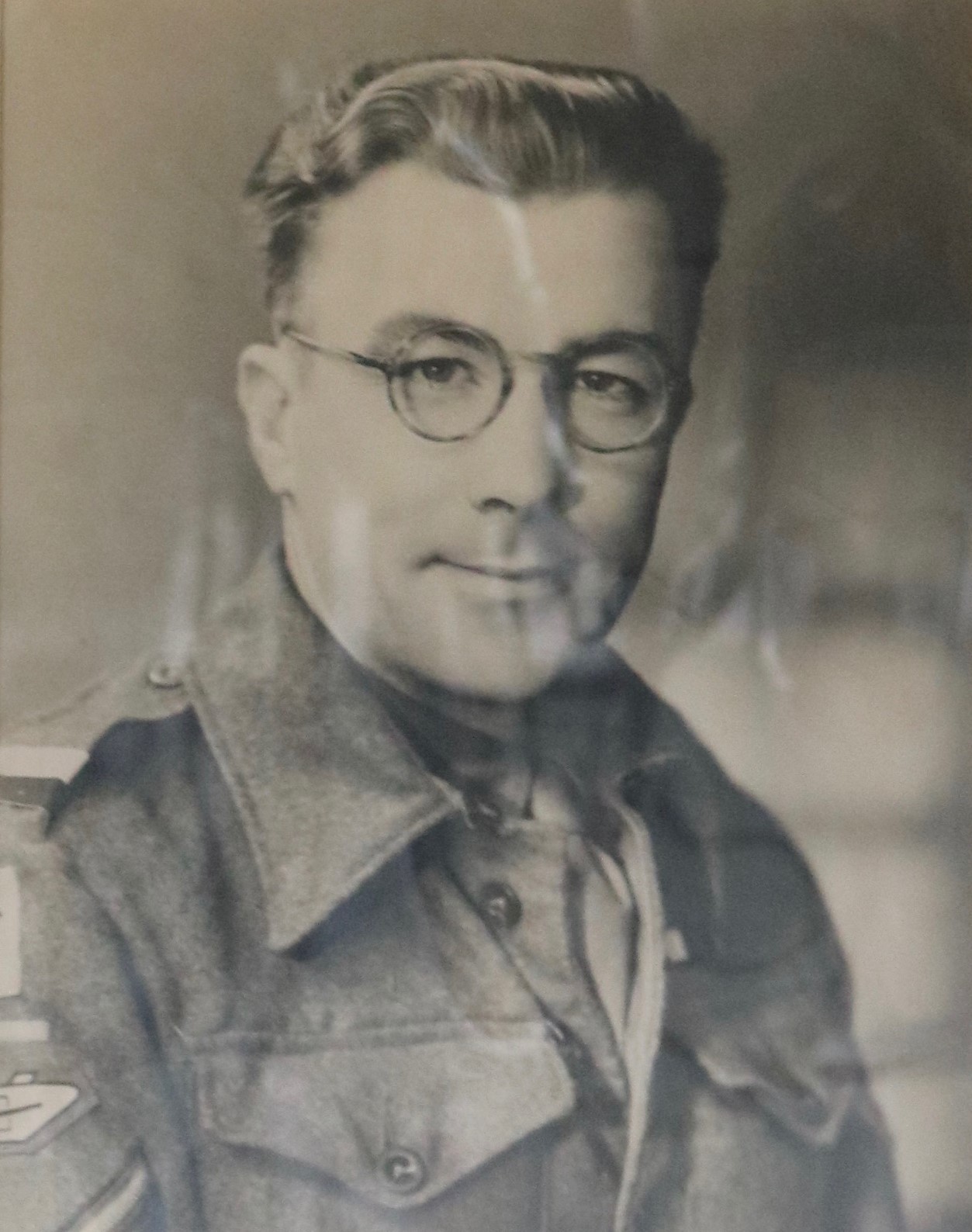
When he was demobbed in 1945, Harry “Tanky” Taylor returned to his old job at the vegetable oil and feed company British Oil and Cake Mill in Bristol. He died of acute angina in 1970, aged just 52. (Private photo, unknown photographer; copied by Ron Flook.)
Harry’s son, Richard, proudly cherishes his father’s memory. Nevertheless, it took some considerable time before he took a closer look at his war souvenirs. It was only a few years ago, as Richard Taylor was approaching retirement age, that he went through Harry’s personal effects. One of them was a leather briefcase his father had taken from a German officer he had helped take prisoner somewhere in North Germany shortly before the end of hostilities. In it was an unusual knife Harry had taken from the same German. The knife, the grip of which was a knuckleduster shaped like a stylised flat skull, was in a leather sheath marked with what must be assumed to be the previous owner’s name and service number: LASSEN A.F.E.V.S 234907. The brass grip was marked with figures 907.
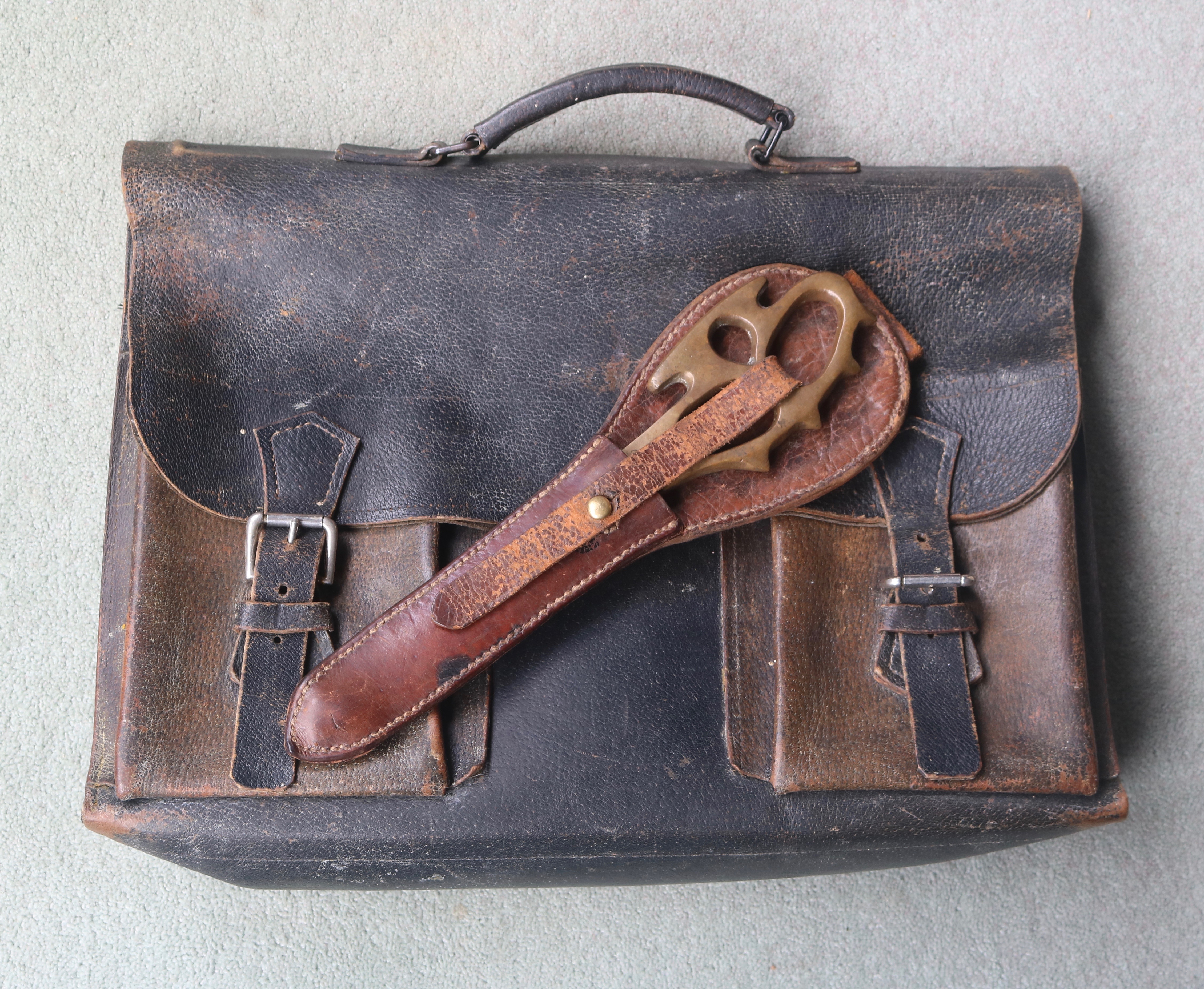
The briefcase, dagger, and sheath that Harry Taylor took from a German officer in North Germany, probably on 18 April 1945. (Photo: Ron Flook.)
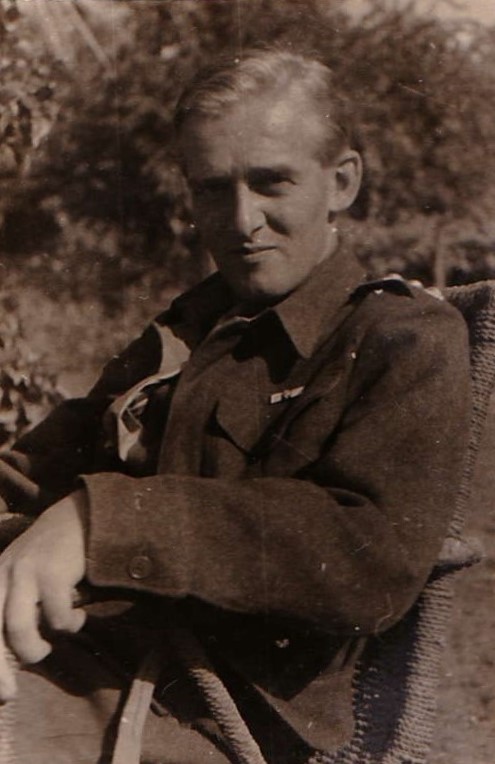
The Dane Anders Frederik Emil Victor Schau Lassen (1920–45) fought in various units of the British special forces, including in Greece from June 1943 to February 1945. He excelled to such an extent that he was decorated with the Military Cross three times, an honour only bestowed on 24 officers. Lassen was promoted to the rank of major as the war progressed. He fell in action at Comacchio in Northern Italy on the night of 8–9 April 1945. For his bravery at Comacchio, he was posthumously awarded the Victoria Cross, Britain’s highest military decoration for valour. The photograph was taken in the Danish Hoffmann family’s garden in Helwan, Egypt, on 29 August 1943. (Private photo, thanks to Anders Fogh.)
Although Richard Taylor knew nothing about Anders Lassen at this point, a quick Google search convinced him that the knife was likely to be of interest to people in Denmark. He e-mailed the Museum of Danish Resistance in Copenhagen to report his find, attaching photographs of the knife and sheath. The Museum forwarded the e-mail to me, requesting that I contact Richard and try to ascertain whether the knife really had belonged to Lassen.
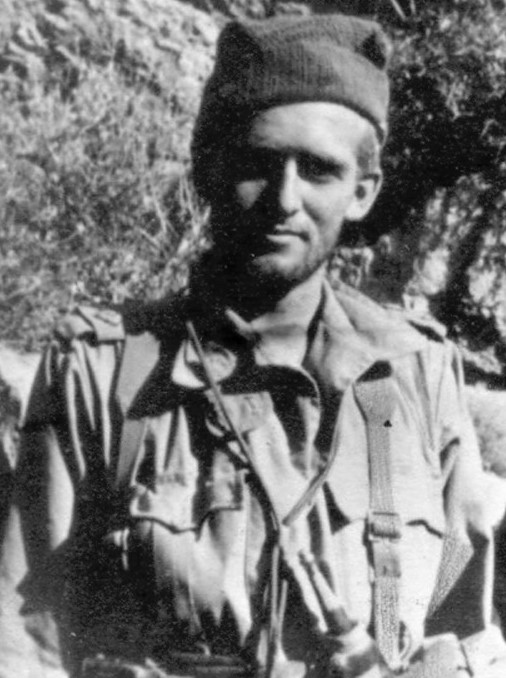
Anders Lassen during a raid on Crete, June–July 1943. He is carrying a nickel-plated F-S Fighting Knife P2 (bottom right) and appears to have wrapped something around the lower part of the sheath. (Photo from Suzanne Lassen’s/the Bernstorff-Gyldensteen family’s collection; unknown photographer.)
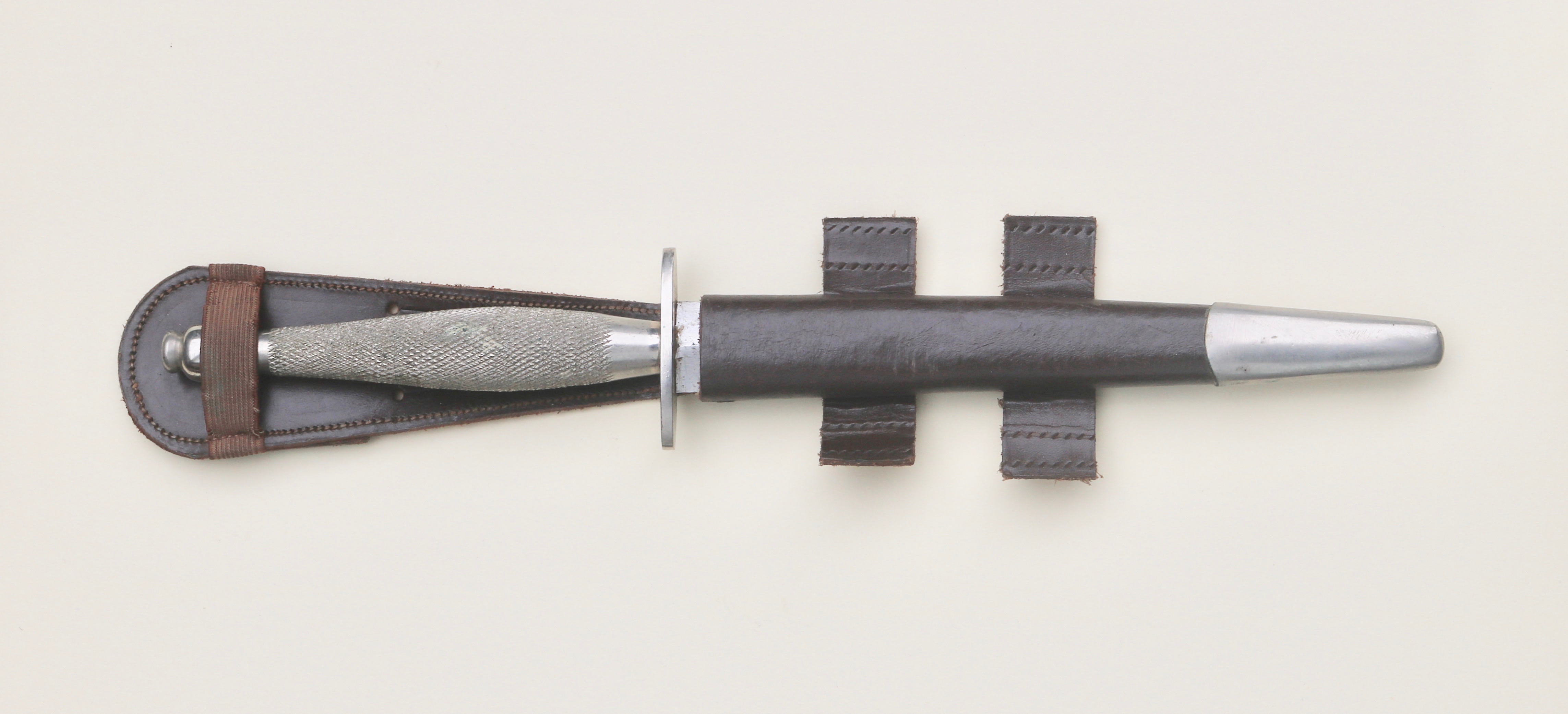
Wilkinson Sword produced several versions of the F-S Fighting Knife. Photographs indicate that Lassen had a nickel-plated P2 (2nd Pattern), as shown here. (Photo: Ron Flook.)
The photographs showed that it was not the standard-issue Fairbairn-Sykes knife used by (among others) the Special Boat Service raider unit to which Anders Lassen belonged from spring 1943 until his death two years later. Instead, it was a Middle East Commando Knife, made in Egypt for 50, 51 and 52 (Middle East) Commando – three units set up in summer 1941 and disbanded in 1942, after which the men were transferred to other units. If the knife really was Lassen’s, it was not standard issue, but he might have swapped his own for it, bought it, won it in a game of poker or acquired it in some other way from a former member of one of the three Middle East Commandos, whom he may have met on leave or while training together in Egypt, Palestine or perhaps Greece. The original owner was possibly one of Lassen’s SBS comrades who had previously served in one of the Middle East units. The Dane was not known for taking particularly good care of his weapons and kit, so this knife must have meant a lot to him if he bothered to stamp it and the sheath with his name and number.
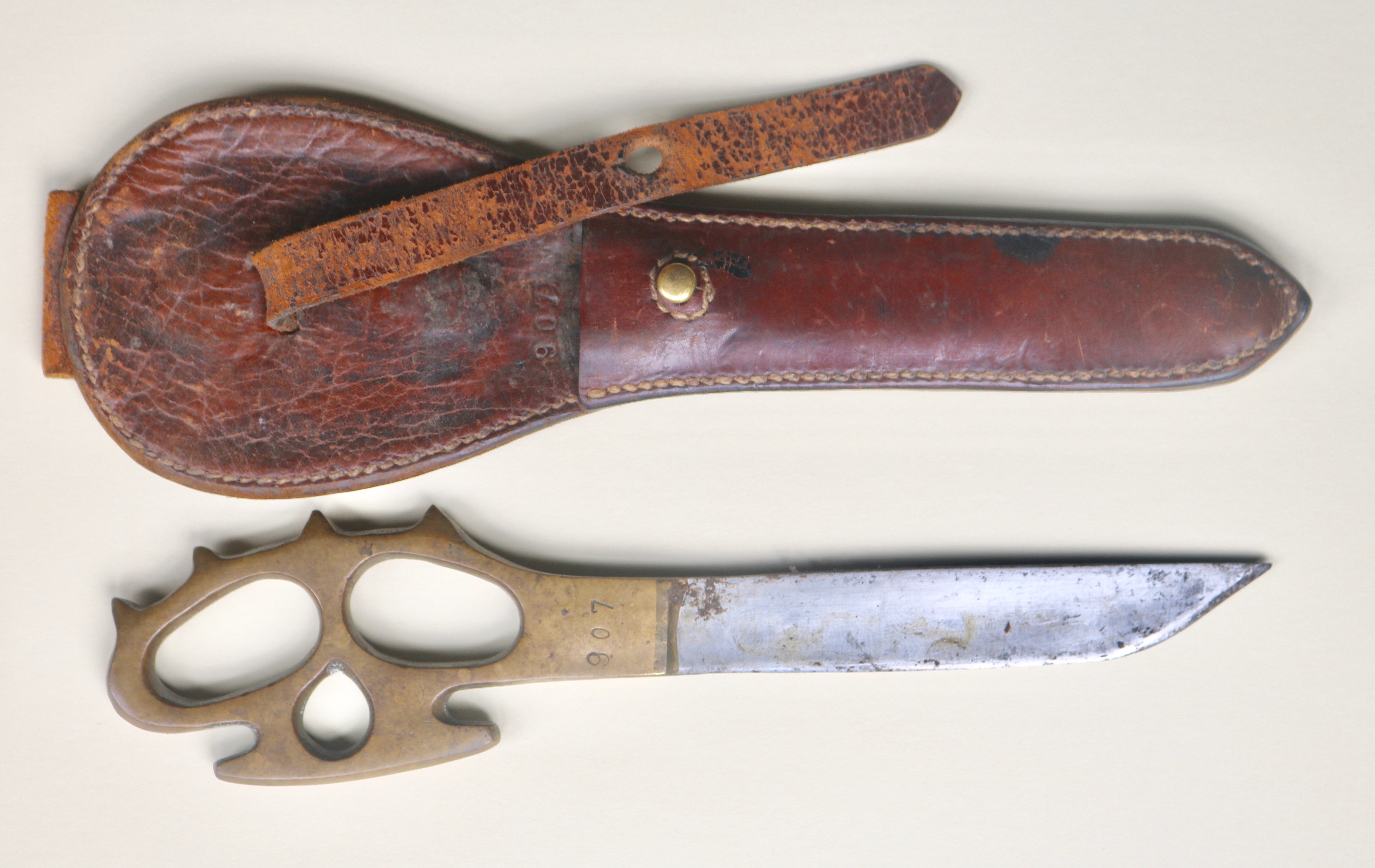
The Middle East Commando Knife was made in Egypt for use by 50, 51 and 52 (Middle East) Commando but probably in greater numbers than the three units needed. According to the Imperial War Museum, quite a few examples have been preserved. (Photo Ron Flook.)
The question was whether the knife and sheath, or the combination of knife, sheath and Lassen’s name and number, were genuine or a complete or partial forgery by someone who knew his name and number and hoped to cash in on Lassen’s fame at some point.
Seeking preliminary clarification, I consulted an old friend from my days as a history student, the curator Michael Højlund Rasmussen MSc. His reply was encouraging. “As far as I can tell from the photographs, both the knife and the leather look the way they should. You cannot forge that kind of ageing. The letters and numbers may well have been stamped into it at the same time as the sheath was made.”
So far, so good, but in order to say anything definitive about their authenticity, a physical examination was necessary. For a variety of reasons, it was not possible to arrange one right away. While I looked into the options for a meeting with Richard Taylor, I thought about how the knife, assuming it really had belonged to Lassen, had ended up in the hands of a German officer in North Germany in the last days or weeks of the war.
It was tempting to imagine that Lassen had it on him at Comacchio on 8–9 April 1945, that a German had removed it from his body after the battle, and that this enemy soldier, or somebody to whom he passed on the knife, was captured less than a month later by 44 RTR in North Germany. It was an appealing hypothesis because it created a direct link between the knife and Lassen’s heroic death. Unfortunately, however, there were numerous arguments against it. To my knowledge, there are no photographs of Lassen with an ME Commando knife. His SBS comrade Dick Holmes informed me that he had never seen Lassen with a knife like it and that “real” SBS men (unlike those behind the frontlines, who kept the unit’s machinery running but never saw action) would not run around with such a “flashy” piece of kit. In addition – and this was the main argument against the Comacchio hypothesis – the Axis troops that Lassen’s patrol was fighting that night belonged to the 162nd (Turkmen) Infantry Division. According to a very thorough account preserved in the German Federal Archives, the 162nd remained in Northern Italy, where it surrendered to the American 88th Infantry Division on 3 May 1945.[2] Of course, it was not out of the question that the knife had somehow made its way from Comacchio to North Germany in the final four weeks of the war when many units were broken up, and their men were scattered to the four winds. It is, however, unlikely.
A less dramatic but more likely hypothesis was that Lassen had at some point lost the knife or disposed of it somewhere in Greece. It had somehow fallen into the hands of a German who thought it was an interesting souvenir and took it with him to North Germany.
The 44 RTR war diary in the National Archives shows that during the period 27 February–22 April 1945, as the battalion advanced through Northern Germany, it took a large number of prisoners – probably a few thousand. Many of the daily entries contain an exact number, but just as often, it only says “many”. The diary almost never specifies the units to which the prisoners belonged, but there is an exception. In the entry for 18 April, the intelligence officer or adjutant who kept the diary noted that in the vicinity of Westerwalsede, approx. 50 km east of Bremen, “approx. 30 PW from the 22nd Inf Pz Jg Bn.” were taken. This is an important piece of information, as the 22nd Panzer-Jäger Battalion was part of the 22nd Volksgrenadier Division, which (under the name 22nd Infantry Division) served in Greece from August 1942 to October 1944. The main body of the division ended the war in Croatia and southern Austria, but as mentioned earlier, many units were split up in the last chaotic weeks of the war. It must be assumed that the information in the 44 RTR war diary was based on both interrogations and the prisoners’ Soldbücher (army paybooks), which would have specified their unit.
The 44 RTR war diary, 18 April 1945. (TNA, WO 171/4715, photo Nina Stähle).
No matter how 30 men from the 22nd Infantry Division ended up in Westerwalsede, it does not seem entirely unreasonable to imagine that one of them brought Lassen’s knife with him from Greece.
In autumn 2019, the British weapons expert Ron Flook was finally able to make an arrangement to visit Richard Taylor and examine his father’s souvenirs. Unfortunately, the proposed date fell foul of the COIVD-19 pandemic.
While we waited for better times, I again discussed the knife with Michael Højlund Rasmussen, who advised me to show pictures of it to a saddler with expertise in historical artefacts. I found just the person in Brian K. Rützou, whose company’s product range includes the bearskin caps worn by the Danish Royal Lifeguards. After studying the images, Brian found it “highly likely that the leather sheath can be dated to the time in question. The wear on the leather, its patina and decay suggest so. The same goes for the type of thread and the production method used, which consisted of hand sewing with tiny stitches.” He also found it “likely that the stamping of the name and number took place at about the same time. It could have been a few years later if the sheath leather has been reasonably well preserved, but not much later. If that were the case, then the indentations and the material around them would have looked different. The leather sheath and the stamping have very much aged simultaneously. Hollow punches made of hardened metal have been used, which were originally made for stamping metal, but both then and now are also used for individual inscriptions/markings on leather.”
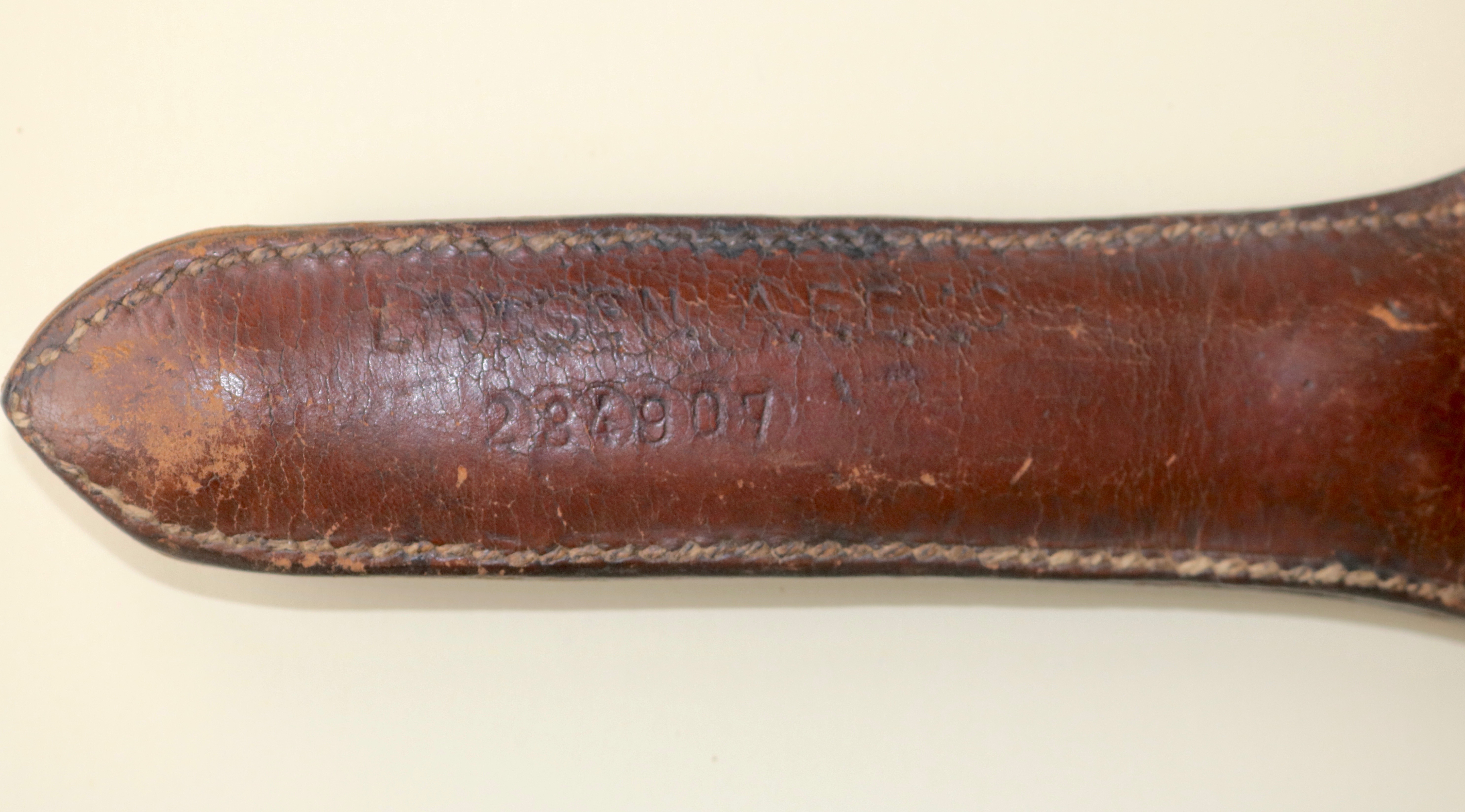
A ring-shaped indentation is visible around the letters. According to Brian K. Rützou, it matches the hollow punches used in Lassen’s day. (Photo Ron Flook.)
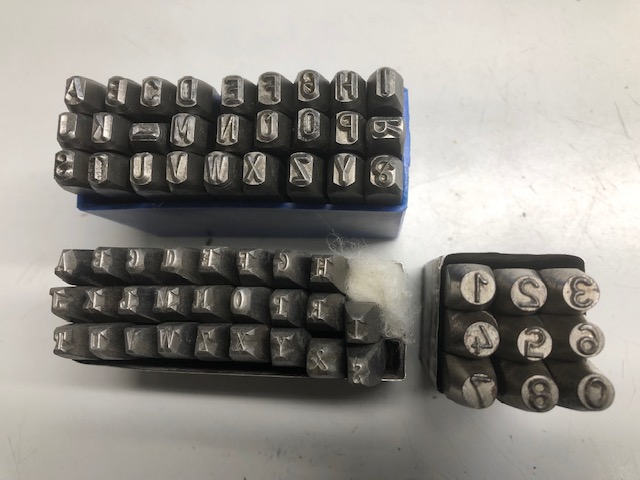
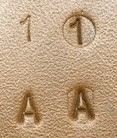
A hollow punch is a kind of “stamp” with a single letter or number, which is hammered into the material to be marked. In Lassen’s day, the numbers and letters on hollow punches for use on metal were not very deep. When the punches were used on leather, the hammer did not have to be struck very hard before the “bottom plate” also left a mark. The picture on the left shows, at the top and bottom left, older tools like those used on Lassen’s knife and sheath; and at the bottom right, a newer model that does not have a “bottom plate”, so does not leave marks around the lettering. The picture to the right shows examples of indentations made by a light and a hard blow, respectively. (Explanation and photo: Brian K. Rützou.)
Once again, the information was encouraging, but Brian did, of course, add the caveat that it was impossible to say anything definitive without physically examining the objects. It therefore came as a relief when Ron Flook was finally able to visit Richard Taylor and conduct a physical examination – and even more so when I received his conclusions.
Unfortunately, Flook found that the briefcase in which the knife had been found bore no markings. In other words, it provided no information, not even a hint, as to the owner’s identity or unit. On the other hand, he said that the knife was identical to originals in the Imperial War Museum and other collections, and that “the brass grip has an original, dull patina, consistent with remaining un-cleaned for many decades, and has no signs of the application of artificial ageing chemicals. The blade has an overall dull patina with traces of protective grease. […] The stamping on the grip and sheath is similar to that seen on other examples. The sheath is also of the same style as known genuine examples, and the wear to the sheath belt loop is consistent with it being worn on a belt. The markings on the reverse of the sheath are commensurate with the age of the item, and do not appear to have been made at a later date. The punch used to stamp the last three digits of the service number (907) appears to be the same as that used to stamp the number on the knife and on the front of the sheath. The knife is a genuine Middle East Commando Knife made circa 1940/1941, and the marking clearly indicates ownership at some stage by Anders Lassen.”
Having established that the knife and sheath really are what they appear to be and that at one time or another they belonged to the most decorated Danish hero of World War II, the obvious next question is whether we can expect to see the objects on display in Denmark, or perhaps in the UK. At the time of writing, the answer is not clear, but Richard Taylor has said that he is leaning toward just keeping them in the family, for whom they are important and fascinating souvenirs of Post Corporal Harry “Tanky” Taylor’s war.
*
Thanks to Richard Taylor for sharing the story of his father’s war souvenirs with us; to Ron Flook, Brian K. Rützou and Michael Højlund Rasmussen, who willingly made their time and expertise available; to historian Nina Stähle, who helped me track the movements and operations of 44 RTR and 162nd (Turk.) Infantry Division; to Captain Thomas Helbro Reimann, the Danish Royal Life Guards, Søren Rasmussen and Anders Thygesen, both formerly of the Museum of Danish Resistance and to translator Tam McTurk for his ongoing interest in Anders Lassen.
*
Thomas Harder has an MA in Italian and history. His biography Anders Lassens krig 9. april 1940–9. april 1945 was published in 2010. The 4th revised and enlarged edition was published by GADs Forlag to mark the 100th anniversary of the birth of Anders Lassen on 22 September 2020. An English version, Special Forces Hero – Anders Lassen VC, MC**, was published by Pen and Sword Books in 2021. A Greek edition has been published by Epikentro Books, also in 2021.
(Translated from Danish by Tam McTurk: )
The Danish version of this article was published in the November 2021 issue of Våbenhistorisk Tidsskrift – The Journal of the Danish Arms and Armour Society


